
The Mystical Negev Desert: A Journey Through Time and Sand
Explore the Negev Desert: Discover ancient ruins, breathtaking landscapes, and the rich cultural heritage of southern Israel in this awe-inspiring desert region.
The Negev Desert, a vast expanse of arid landscape in southern Israel, captivates travelers with its unique blend of natural beauty, historic sites, and cultural significance. Stretching over 13,000 square kilometers, this desert offers an array of activities that cater to adventure seekers, history buffs, and nature lovers alike. From its dramatic craters to its serene oases, the Negev is a testament to the raw and untamed beauty of the natural world. A visit to the Negev Desert is incomplete without exploring the Ramon Crater, the world's largest erosion crater. This geological wonder provides breathtaking views and numerous hiking trails that allow visitors to immerse themselves in its rugged terrain. The crater also houses the Ramon Visitor Center, which offers insights into the region's geology, flora, and fauna. For those interested in history, the ancient Nabatean city of Avdat is a must-see. Once a thriving center on the Incense Route, Avdat's ruins offer a glimpse into the lives of the Nabateans who built it over two millennia ago. The city is now a UNESCO World Heritage site and provides an intriguing look at ancient desert civilization. The Negev is also home to several Bedouin communities, offering an opportunity to experience their traditional way of life. Visitors can enjoy authentic Bedouin hospitality, partake in traditional meals, and even spend a night in a Bedouin tent. This cultural immersion provides a unique perspective on the desert's human heritage. Nature enthusiasts will find solace in the Ein Avdat National Park, a stunning canyon with natural springs and waterfalls. The park is a haven for wildlife, including ibex and various bird species, making it a perfect spot for photography and birdwatching. Additionally, the Negev's clear night skies make it an ideal destination for stargazing, with several observatories and guided tours available. Whether you're seeking adventure, history, or tranquility, the Negev Desert offers an unforgettable experience that connects you to the ancient and natural world.
Local tips in Negev Desert
- Visit in the cooler months (October to April) to avoid the extreme heat of the summer.
- Stay hydrated and carry plenty of water, especially when hiking or exploring remote areas.
- Wear appropriate clothing and sun protection, including hats and sunscreen.
- Consider joining a guided tour for deeper insights into the region's history and geology.
- Check for local festivals and events, such as the Tamar Festival, to enhance your cultural experience.
- Book accommodations in advance, especially if you plan to stay in unique lodging like Bedouin tents or eco-lodges.
The Mystical Negev Desert: A Journey Through Time and Sand
The Negev Desert, a vast expanse of arid landscape in southern Israel, captivates travelers with its unique blend of natural beauty, historic sites, and cultural significance. Stretching over 13,000 square kilometers, this desert offers an array of activities that cater to adventure seekers, history buffs, and nature lovers alike. From its dramatic craters to its serene oases, the Negev is a testament to the raw and untamed beauty of the natural world. A visit to the Negev Desert is incomplete without exploring the Ramon Crater, the world's largest erosion crater. This geological wonder provides breathtaking views and numerous hiking trails that allow visitors to immerse themselves in its rugged terrain. The crater also houses the Ramon Visitor Center, which offers insights into the region's geology, flora, and fauna. For those interested in history, the ancient Nabatean city of Avdat is a must-see. Once a thriving center on the Incense Route, Avdat's ruins offer a glimpse into the lives of the Nabateans who built it over two millennia ago. The city is now a UNESCO World Heritage site and provides an intriguing look at ancient desert civilization. The Negev is also home to several Bedouin communities, offering an opportunity to experience their traditional way of life. Visitors can enjoy authentic Bedouin hospitality, partake in traditional meals, and even spend a night in a Bedouin tent. This cultural immersion provides a unique perspective on the desert's human heritage. Nature enthusiasts will find solace in the Ein Avdat National Park, a stunning canyon with natural springs and waterfalls. The park is a haven for wildlife, including ibex and various bird species, making it a perfect spot for photography and birdwatching. Additionally, the Negev's clear night skies make it an ideal destination for stargazing, with several observatories and guided tours available. Whether you're seeking adventure, history, or tranquility, the Negev Desert offers an unforgettable experience that connects you to the ancient and natural world.
When is the best time to go to Negev Desert?
Unmissable attractions to see
Negev Zoo
Discover the Negev Zoo: A uniquely thrilling wildlife park in Be'er Sheva, perfect for families and animal lovers seeking adventure and education.
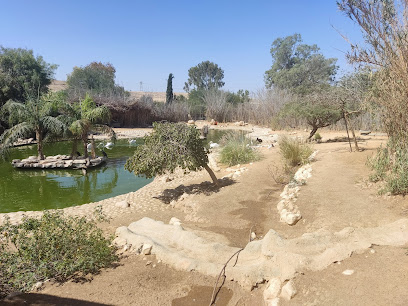
Kholot Tsivoniyim
Discover the natural beauty of Kholot Tsivoniyim, a stunning hiking destination in Israel perfect for nature lovers and adventure seekers alike.
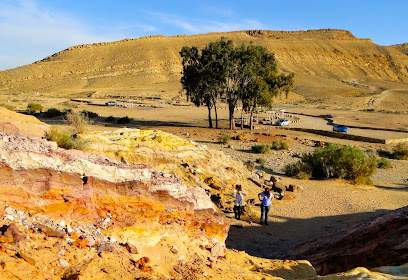
Colorful sand park
Experience the enchanting beauty of Colorful Sand Park in Mitzpe Ramon, where vibrant sands meet artistic creativity in the heart of the Negev Desert.
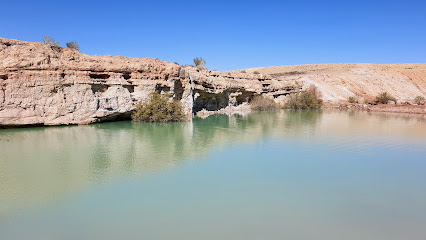
Chan Hashayarot
Explore the tranquil beauty of Chan Hashayarot in Sde Boker—an enchanting desert gem offering breathtaking views and serene experiences.
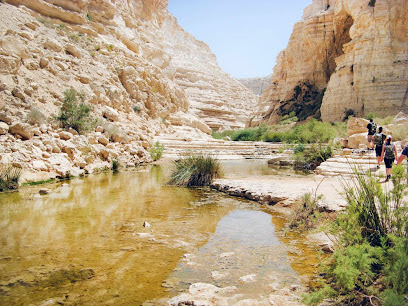
River Park Beer Sheva
Explore River Park Beer Sheva, a serene national park offering lush landscapes, recreational activities, and tranquil spots for relaxation in Be'er Sheva.
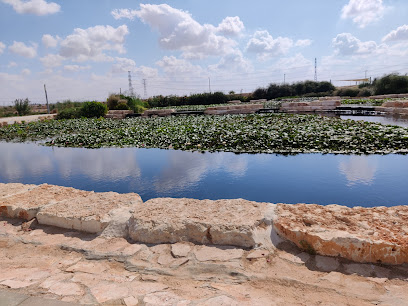
עין עקב
Explore Sde Boker, a beautiful nature preserve in Israel, where stunning desert landscapes meet rich historical significance.
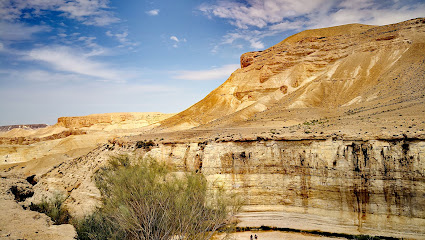
Ben Gurion Park
Explore Ben Gurion Park in Dimona, a picturesque national park offering hiking trails, picnic spots, and stunning natural beauty for every traveler.
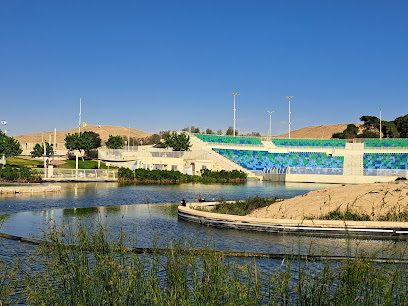
Ship Of The Desert
Discover the enchanting allure of Ship Of The Desert, where adventure meets tranquility in the heart of the desert landscape.
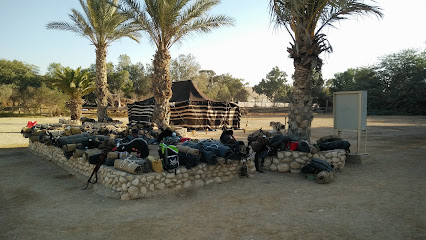
HaMinsara
Experience the breathtaking beauty of HaMinsara in Mitzpe Ramon, a natural wonder that captivates tourists with its stunning views and unique geological features.
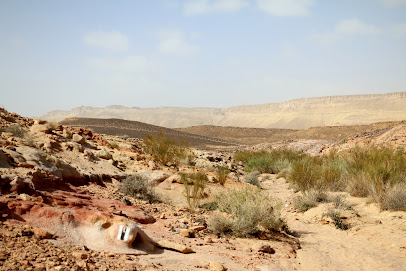
Shivta National Park
Explore the ancient ruins and breathtaking landscapes of Shivta National Park, a unique blend of history and nature in the heart of the Negev Desert.
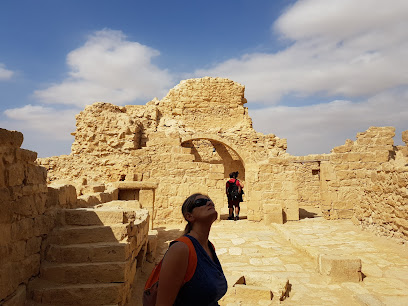
קבר בן גוריון
Discover the serene beauty and historical significance of Ben Gurion's Tomb, the final resting place of Israel's first Prime Minister in the stunning Negev Desert.
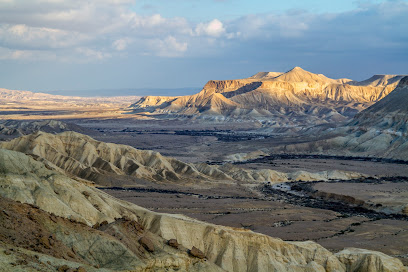
FARAN Soaps & Natural Cosmetic
Explore the beauty of natural cosmetics at FARAN Soaps & Natural Cosmetic in Mitzpe Ramon, where tradition meets sustainability.
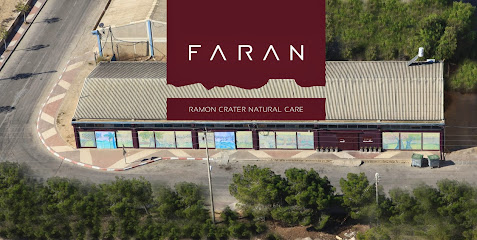
Succah in the Desert
Experience the beauty of the desert at Succah in the Desert, a unique tourist attraction offering cozy lodging and exquisite local cuisine.
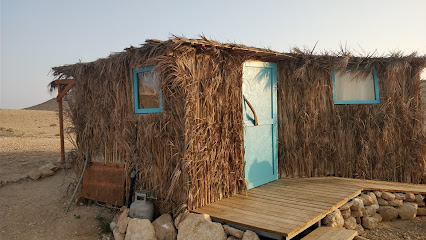
Atid Bamidbar
Explore Atid Bamidbar in Yeruham - A serene tourist attraction blending natural beauty and rich cultural heritage for an unforgettable experience.
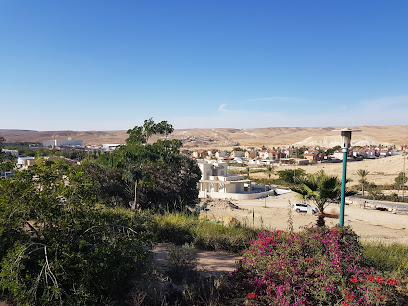
זואק אומנות מרוקאית
Explore the hidden gem of Yeruham, where stunning desert landscapes meet rich cultural heritage in Israel's Negev region.
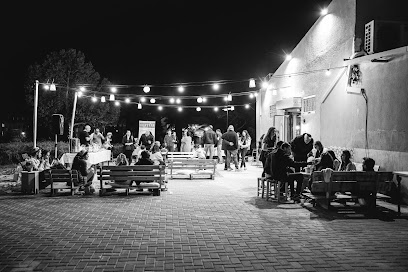
Essential places to dine
HaHavit
Experience culinary excellence at HaHavit in Mitzpe Ramon - where vibrant flavors meet stunning desert views.
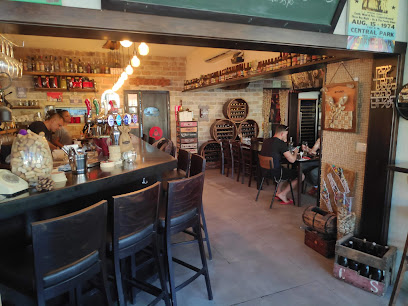
מסעדת הקצה
Discover the flavors of Mitzpe Ramon at Hakatze Restaurant - where local ingredients meet culinary artistry.
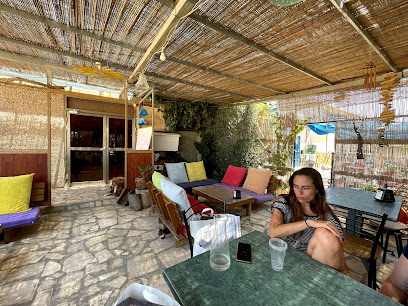
Sumsumiya
Discover Sumsumiya in Mitzpe Ramon: where creative cuisine meets an inviting atmosphere for an unforgettable dining experience.
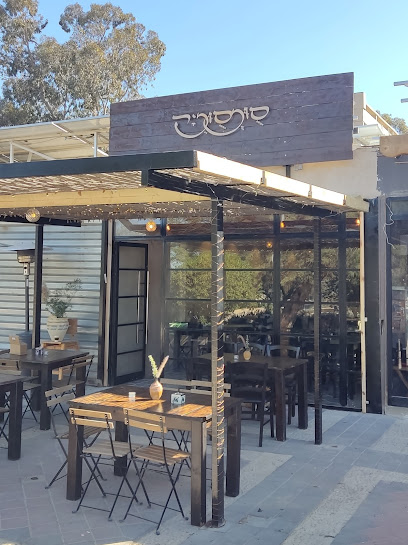
Vegan Xpress
Discover the vibrant world of plant-based cuisine at Vegan Xpress in Mitzpe Ramon - where flavor meets sustainability!
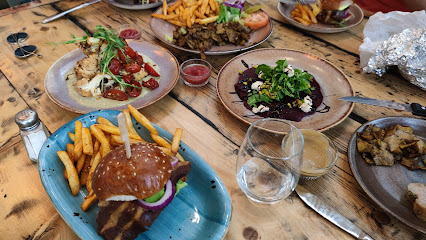
Ultra: Food from Israel and the Caucasus
Experience authentic Israeli and Caucasian cuisine at Ultra, where every dish tells a story of rich flavors and cultural heritage.
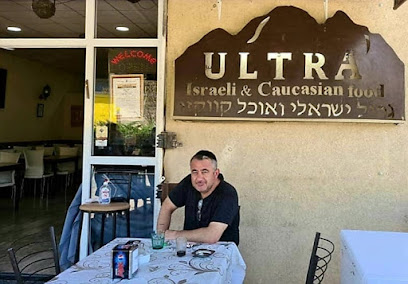
מצפאית פיקניק במדבר Mitzpe Eat
Experience exquisite flavors at Mitzpe Eat – your ultimate dining destination amidst the captivating beauty of Mitzpe Ramon.
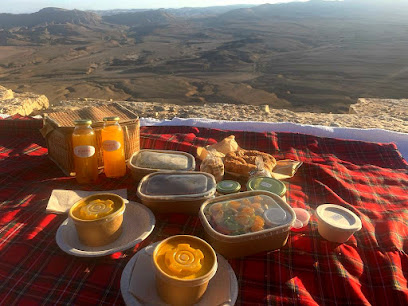
BOTZ by Tal Ashkenasi בוץ שף טל אשכנזי
Experience culinary excellence at BOTZ by Tal Ashkenasi in Mitzpe Ramon - where innovation meets tradition in fine dining.

Keeboots Cafe - קפה קיבוץ
Discover Keeboots Cafe in Mitzpe Ramon - where exceptional coffee meets delightful cuisine amidst stunning desert landscapes.
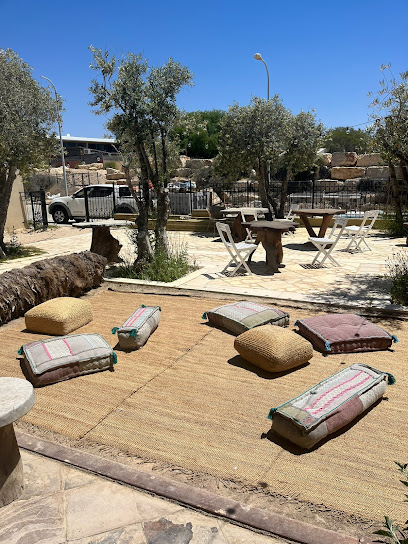
Cafe Spice Quarter
Discover Cafe Spice Quarter: A delightful restaurant in Mitzpe Ramon offering Mediterranean-inspired dishes amidst stunning desert views.
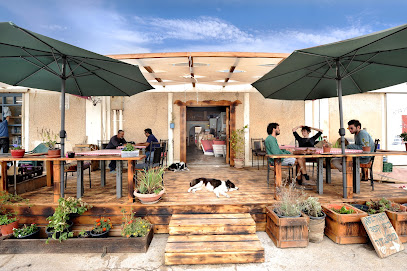
Zarqa Restaurant , מסעדת זרקא
Experience authentic Mediterranean cuisine at Zarqa Restaurant in Mitzpe Ramon, where fresh ingredients meet vibrant flavors in a welcoming atmosphere.
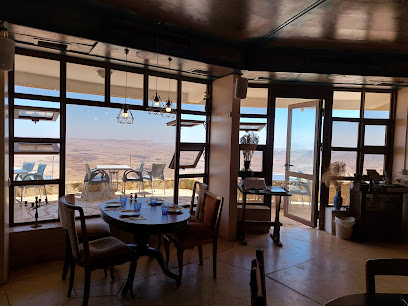
Salman Bedouin Hospitality Experience
Discover authentic flavors and rich traditions at Salman Bedouin Hospitality Experience—where every meal tells a story.
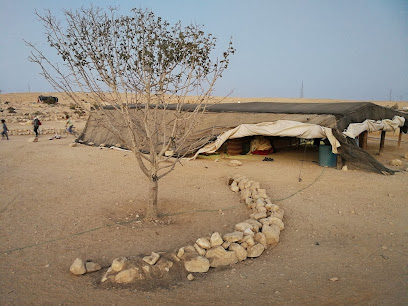
Masala Dosa מסאלה בחצר
Experience authentic Indian cuisine at Masala Dosa in Mitzpe Ramon - a flavorful journey through India's rich culinary heritage.
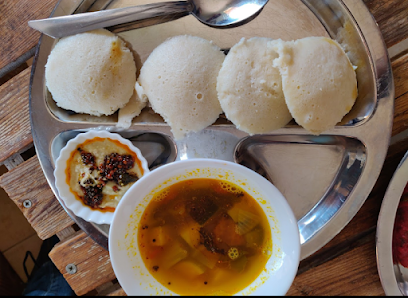
Jachnun Chofshit
Experience authentic Israeli cuisine at Jachnun Chofshit in Mitzpe Ramon - savor traditional flavors and warm hospitality.
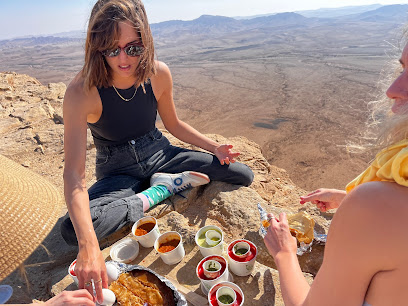
Desert Kitchen - מטבח במדבר
Experience exceptional vegetarian cuisine at Desert Kitchen in Mitzpe Ramon, where culinary creativity meets breathtaking desert views.
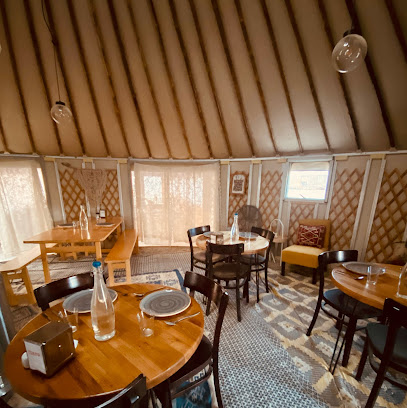
נפגשים במדבר סאלם אבו בלייה
Discover delicious local cuisine at נפגשים במדבר סאלם אבו בלייה, nestled in the breathtaking Negev Desert along the Israel Trail.
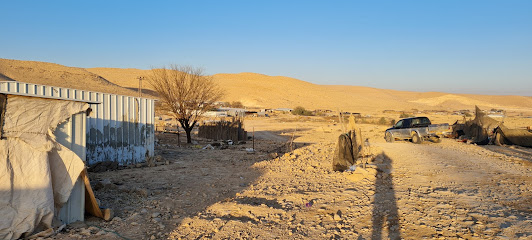
Essential bars & hidden hideouts
HaHavit
Experience HaHavit: Mitzpe Ramon's premier gastropub offering delicious cuisine and a vibrant atmosphere in the heart of the desert.
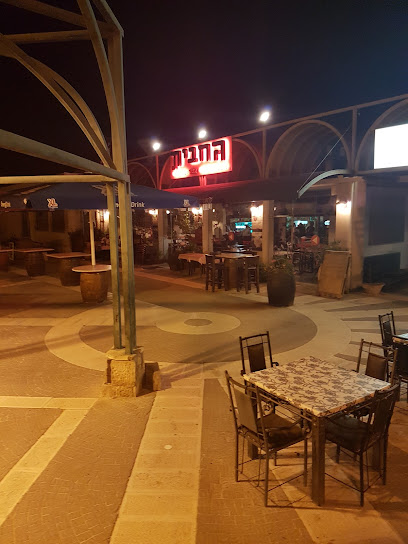
Habereh Pub
Discover the cultural heartbeat of Mitzpe Ramon at Habereh Pub, where vibrant nightlife meets local charm for an unforgettable evening.
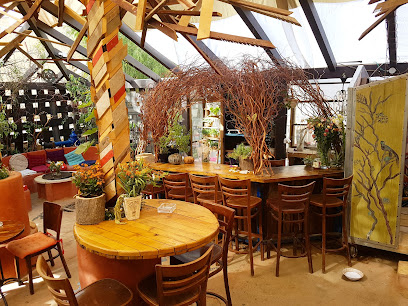
פאב 40 טללים
Discover the vibrant atmosphere of Pub 40 Tlalim, where delicious meals meet live music in an unforgettable nightlife experience.
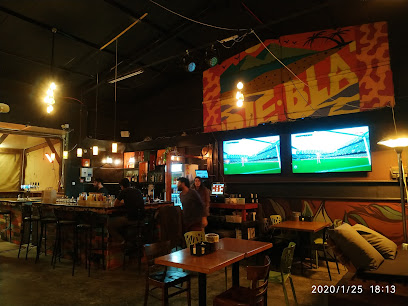
Roots Bar & Kitchen
Discover the lively spirit of Be'er Sheva at Roots Bar & Kitchen, where great food and drinks meet a vibrant nightlife experience.
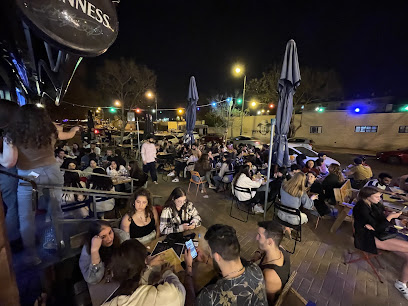
בלנדר
Discover the vibrant nightlife at Blender, Be'er Sheva's premier pub, offering a unique blend of local brews and warm ambiance.

ששון בר
Discover Sasson Bar in Be'er Sheva, a vibrant spot for beer lovers and sports fans, perfect for enjoying local culture and nightlife.
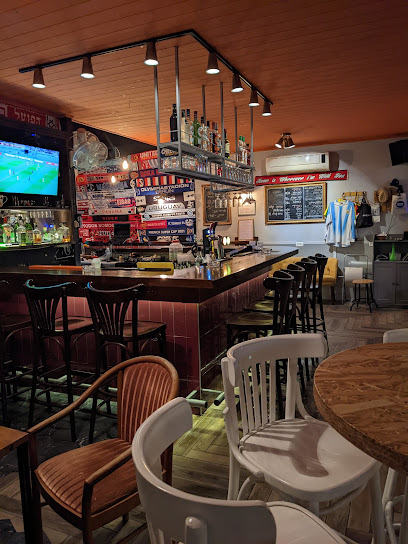
מדבר יין - Desert Wine Bar
Experience the best of Mitzpe Ramon at the Desert Wine Bar, where fine wines, delicious gastropub fare, and stunning desert views come together.
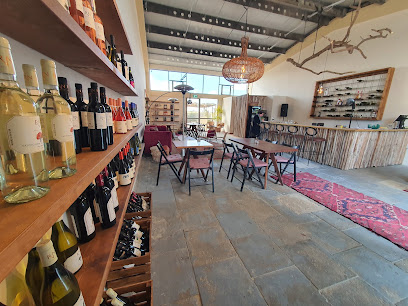
Zarqa Restaurant , מסעדת זרקא
Experience the flavors of the Mediterranean at Zarqa Restaurant in Mitzpe Ramon, where culinary tradition meets a vibrant atmosphere.
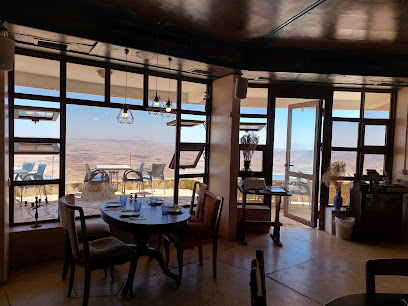
HaMaavara Bar
Discover the lively spirit of Yeruham at HaMaavara Bar, where great drinks and great company create unforgettable evenings.
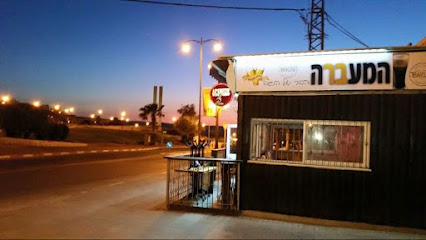
מידבר במאגר עין יהב
Experience the serene beauty and vibrant bar culture of Ein Yahav, a hidden gem in the stunning Negev Desert.
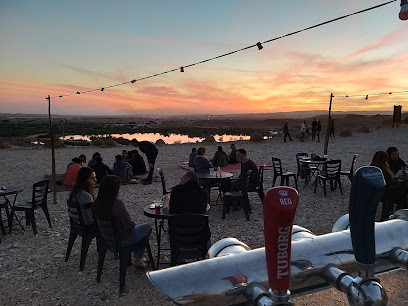
MingLing bar - מינגלינג בר
Experience the vibrant nightlife at MingLing Bar in Be'er Sheva, where exceptional cocktails and a welcoming atmosphere await every visitor.

פאב שדה בוקר
Discover the local nightlife at Sde Boker Pub, where the vibrant ambiance and friendly atmosphere create unforgettable memories.

אולטרה דאנס בר
Discover the vibrant nightlife at אולטרה דאנס בר in Mitzpe Ramon, where unique cocktails and an electric atmosphere await.

Bar charged
Discover the lively nightlife of Yeruham at Bar Charged, a must-visit bar for tourists seeking a vibrant social scene and unforgettable experiences.
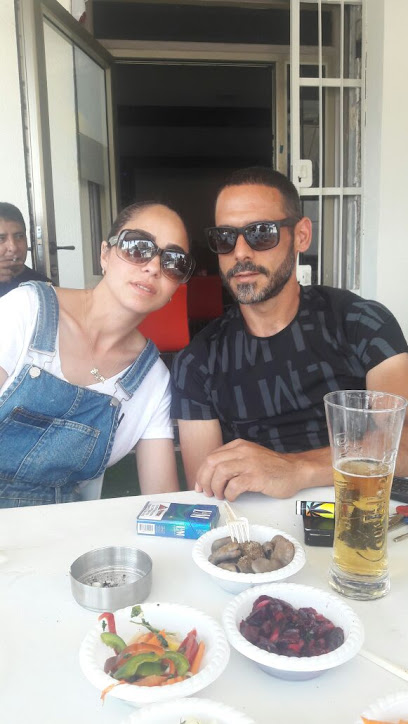
Ultra Dance Bar&Restaurant
Experience the vibrant nightlife and culinary delights at Ultra Dance Bar & Restaurant in Mitzpe Ramon, where every night is a celebration.

Local Phrases about Negev Desert
-
- Helloשלום
[Shalom] - Goodbyeלהתראות
[Lehitraot] - Yesכן
[Ken] - Noלא
[Lo] - Please/You're welcomeבבקשה
[Bevakasha] - Thank youתודה
[Toda] - Excuse me/Sorryסליחה
[Slicha] - How are you?איך אתה?
[Eich atah?] - Fine. And you?טוב. ואתה?
[Tov. Veata?] - Do you speak English?אתה מדבר אנגלית?
[Atah medaber anglit?] - I don't understandאני לא מבין
[Ani lo mevin]
- Helloשלום
-
- I'd like to see the menu, pleaseאני רוצה לראות את התפריט, בבקשה
[Ani rotse lirot et hataprit, bevakasha] - I don't eat meatאני לא אוכל בשר
[Ani lo ochel basar] - Cheers!לחיים!
[Lachaim!] - I would like to pay, pleaseאני רוצה לשלם, בבקשה
[Ani rotse leshalem, bevakasha]
- I'd like to see the menu, pleaseאני רוצה לראות את התפריט, בבקשה
-
- Help!עזור!
[Ezor!] - Go away!לך לאיפה!
[Lech le'eyfo!] - Call the Police!קרא למשטרה!
[Kara lemishtara!] - Call a doctor!קרא לרופא!
[Kara larofe!] - I'm lostאני אבוד
[Ani avud] - I'm illאני חולה
[Ani holeh]
- Help!עזור!
-
- I'd like to buy...אני רוצה לקנות...
[Ani rotse liknot...] - I'm just lookingאני רק מסתכל
[Ani rak mistakel] - How much is it?כמה זה עולה?
[Kama ze ole?] - That's too expensiveזה יקר מדי
[Ze yikar madi] - Can you lower the price?אפשר להנמיך את המחיר?
[Efshar lehanmich et hamachir?]
- I'd like to buy...אני רוצה לקנות...
-
- What time is it?כמה השעה?
[Kama hasha'a?] - It's one o'clockהשעה אחת
[Hasha'a achad] - Half past (10)חצי (עשר)
[Hatzi (eser)] - Morningבוקר
[Boker] - Afternoonצהריים
[Tzohorayim] - Eveningערב
[Erev] - Yesterdayאתמול
[Etmol] - Todayהיום
[Hayom] - Tomorrowמחר
[Mahar] - 1אחד
[Echad] - 2שניים
[Shnayim] - 3שלושה
[Shlosha] - 4ארבעה
[Arba'a] - 5חמישה
[Chamisha] - 6שישה
[Shisha] - 7שבעה
[Shiv'a] - 8שמונה
[Shmoneh] - 9תשעה
[Tish'a] - 10עשרה
[Eser]
- What time is it?כמה השעה?
-
- Where's a/the...?איפה נמצא...
[Eifo nimtza...] - What's the address?מה הכתובת?
[Ma hakatovet?] - Can you show me (on the map)?אתה יכול להראות לי (על המפה)?
[Ata yachol leharot li (al hamapa)?] - When's the next (bus)?מתי האוטובוס הבא?
[Matay haotobus haba?] - A ticket (to ....)כרטיס (ל...)
[Kartis (le...)]
- Where's a/the...?איפה נמצא...
History of Negev Desert
-
The Negev Desert has been a crossroads of ancient trade routes for millennia. Caravans traversed the region, linking the Arabian Peninsula with the Mediterranean Sea. The Incense Route, in particular, was vital for the trade of frankincense and myrrh, treasured commodities in the ancient world.
-
The Nabateans, an ancient Arab people, established a flourishing civilization in the Negev Desert. They built impressive cities such as Avdat, Mamshit, and Shivta. These cities served as key stops along the Incense Route and demonstrate advanced agricultural techniques and intricate water management systems.
-
Following the decline of the Nabatean Kingdom, the Romans, and later the Byzantines, took control of the Negev. They expanded and fortified the Nabatean cities, integrating them into the broader Roman trade networks. Architectural remnants from this period, such as fortresses and churches, can still be seen today.
-
During the early Islamic period, the Negev Desert saw a decline in extensive settlement and trade activity. However, it remained strategically significant. Some of the Nabatean cities were repurposed as Islamic settlements, and the region continued to be a crucial link between Egypt and the Levant.
-
Under Ottoman rule, the Negev Desert was sparsely populated but witnessed a resurgence in strategic military importance. The Ottomans established a series of forts and watchtowers to control the region and protect the routes connecting the Arabian Peninsula with the Mediterranean.
-
In the 20th century, the Negev Desert became a focus of Zionist settlement efforts. The establishment of kibbutzim and moshavim aimed to make the desert bloom through innovative agricultural techniques, including drip irrigation. The city of Beersheba emerged as the administrative and economic center of the Negev.
-
David Ben-Gurion, Israel's first Prime Minister, envisioned the Negev as a crucial area for the future of Israel. He famously retired to Sde Boker, a kibbutz in the Negev, to lead by example in the development of the desert. His vision continues to influence the region's development today.
-
In 2005, the Nabatean Incense Route and its associated desert cities in the Negev were designated as UNESCO World Heritage Sites. This recognition highlights the historical and cultural significance of the region and emphasizes the need for preservation and study of its ancient heritage.
Negev Desert Essentials
-
The Negev Desert is located in southern Israel. The nearest major airport is Ben Gurion Airport in Tel Aviv, approximately 140 kilometers away. From Tel Aviv, you can take a direct bus or train to Be'er Sheva, the largest city in the Negev. Alternatively, you can rent a car and drive, which takes about 1.5 to 2 hours. Another option is to take a domestic flight to Eilat and then travel northwards into the desert.
-
Within the Negev Desert, transportation options include buses, taxis, and rental cars. Egged buses connect major cities like Be'er Sheva, Mitzpe Ramon, and Eilat. Taxis are readily available but may be more expensive. Renting a car is highly recommended for exploring the desert at your own pace, especially for reaching remote sites. For adventure enthusiasts, 4x4 vehicles are available for hire to navigate off-road trails.
-
The official currency in Israel is the Israeli New Shekel (ILS). Credit and debit cards are widely accepted in hotels, restaurants, and larger shops. However, it's advisable to carry some cash, especially when visiting smaller establishments or remote areas where card machines may not be available. ATMs are available in major cities like Be'er Sheva and Eilat.
-
The Negev Desert is generally safe for tourists. However, like any travel destination, it's essential to take standard precautions. Avoid walking alone at night in isolated areas and keep an eye on your belongings in crowded places. Petty crimes like pickpocketing can occur in busy tourist spots. Some areas near the border with Egypt are restricted and should be avoided. It's advisable to check travel advisories for updated information.
-
In case of emergency, dial 100 for police, 101 for medical emergencies, and 102 for fire services. Medical facilities are available in major cities like Be'er Sheva. It's recommended to have travel insurance that covers medical emergencies. Pharmacies are available in urban areas for over-the-counter medications. In remote areas, assistance might be limited, so prepare accordingly with first aid supplies.
-
Fashion: Do dress modestly, especially when visiting religious sites. Avoid wearing revealing clothing. Religion: Do respect local customs and traditions. Always cover your head when entering religious sites. Public Transport: Do be polite and give up your seat to elderly passengers. Don't eat or drink on public transport. Greetings: Do greet people with a handshake. A simple 'Shalom' (Hello) is a common greeting. Eating & Drinking: Do try local foods and accept hospitality. Don't refuse food or drink offerings, as it is considered impolite.
-
To experience the Negev Desert like a local, consider staying at a traditional Bedouin tent camp where you can enjoy authentic Bedouin hospitality and cuisine. Visit local markets in Be'er Sheva for fresh produce and handmade goods. Engage with locals, as they are often friendly and willing to share stories about the region's history and culture. Don't miss the Ramon Crater and Timna Park for unique geological formations and hiking opportunities.
Nearby Cities to Negev Desert
-
Things To Do in Petra
-
Things To Do in Dana
-
Things To Do in Tafilah
-
Things To Do in Masada
-
Things To Do in Kerak
-
Things To Do in Ein Gedi
-
Things To Do in Ma'an
-
Things To Do in Dead Sea
-
Things To Do in Bethlehem
-
Things To Do in Jerusalem
-
Things To Do in Ashdod
-
Things To Do in Eilat
-
Things To Do in Modi'in
-
Things To Do in Aqaba
-
Things To Do in Wadi Rum













